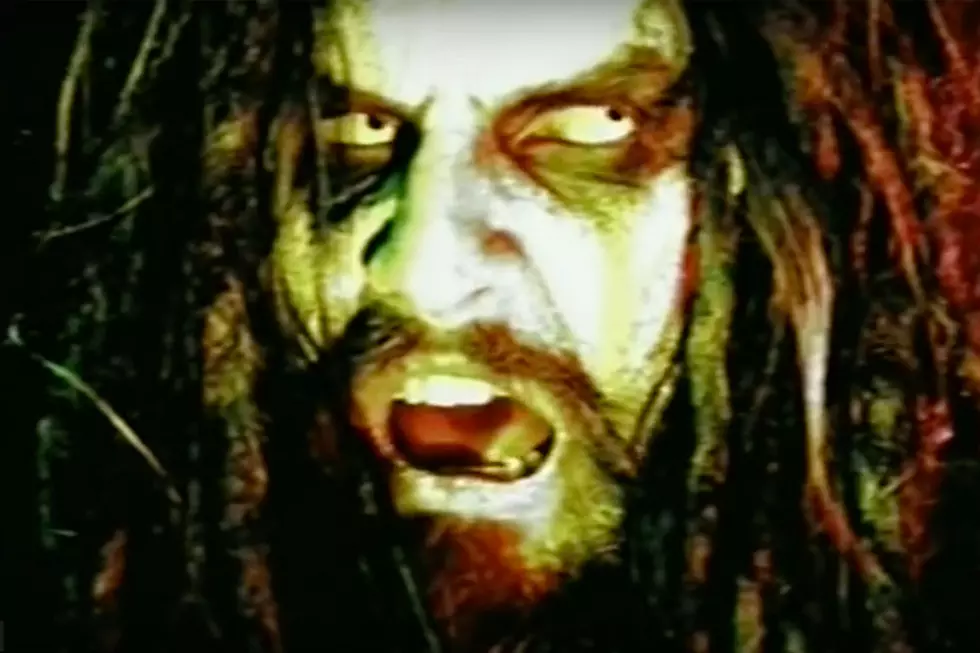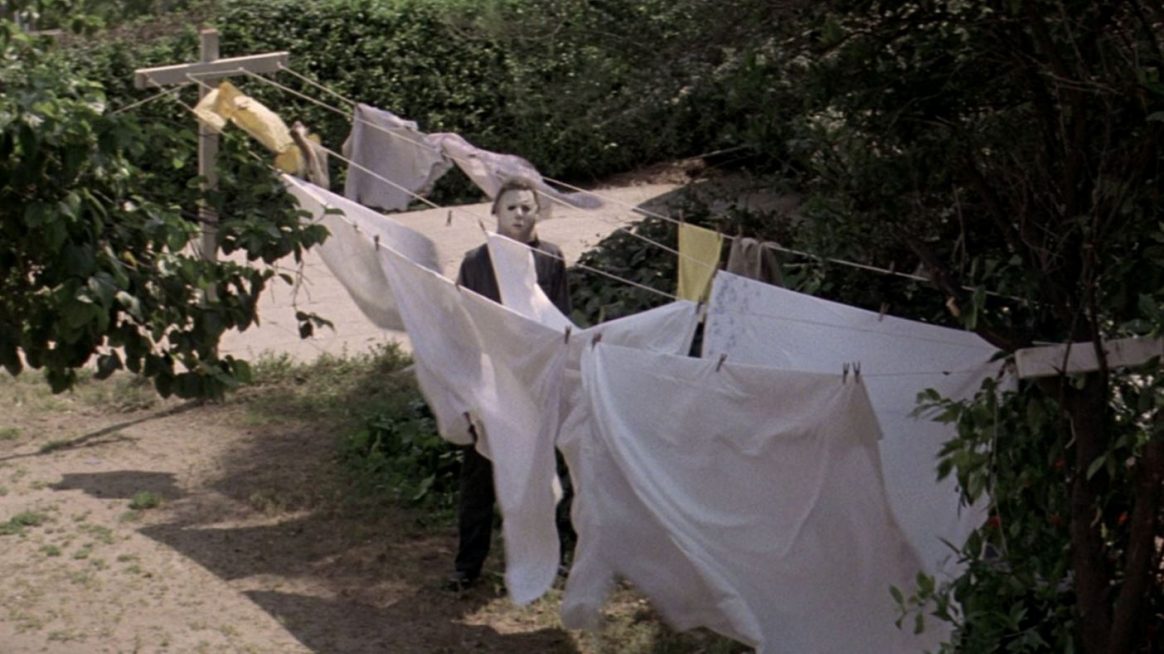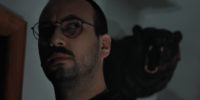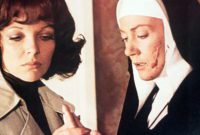Halloween, the film that launched the slasher genre into the mainstream, first adorned film screens in 1978. Michael Myers, the Boogeyman, the worst nightmare of an entire town, has steadily continued his activities for over four decades. With the recent release of Halloween Kills, the Shape is now twelve movies deep, with lucky number thirteen on the way next year. The fictional town of Haddonfield, Illinois, has been viewed through many lenses. Eight directors have now taken on the task of showing the world what Michael is capable of, their thoughts on the definition of pure evil, and the “work” of Mr. Myers. However, of the eight, only two have tackled the first “night he came home.”
Directing Halloween

John Carpenter co-wrote, along with producer Debra Hill, and directed Michael Myer’s first five kills. Halloween was only the third feature film to be directed by Carpenter, the first two being Dark Star in 1974 and Assault on Precinct 13 in 1976. Carpenter’s approach was a less brutal and more suspenseful one. He wasn’t looking to scare the audience with gore but get them emotionally involved in the survival of Laurie Strode and her friends. Nearly every moment the Shape is shown on screen is barely more than a glimpse. Carpenter built suspense to the highest point before payoff. His original vision may be tame by today’s standards, with only five people killed, but it’s a staple of the genre.

Rob Zombie’s approach was a bit more in your face. Just like Carpenter and Hill, Zombie took on the writing duties along with directing. He doesn’t completely disregard the suspense for brutality, but the violence is definitely ramped up. This was made for a modern audience, however, and in a world where we have Saw and Hostel, that is what was expected. From the first few moments of the film, we see a much different look at what turns young Michael Myers into the Boogeyman. It’s the scenes set in the past when Michael is a kid that take the reimagining road. The “remake” aspect of it really comes front and center when Michael returns home.
Ambiguity

The original plan for Halloween, not just as a film but as a franchise, was to be an anthology series—a different horror movie every year or so. This idea was attempted with, and quickly scrapped after, the commercial failure of Halloween III: Season of the Witch. Because of this original concept, Carpenter intentionally left details about Michael’s childhood out. There is no deep dive into his home life or his parents or why he kills. You know he killed his sister when he was six, and then you see him escape fifteen years later. Laurie being his sister was never intended. The Shape’s only motivation was to kill. He spots Laurie first after he returns to his childhood home, and she becomes his target. He has no reason other than wanting to kill. The idea of him coming after his sister wasn’t introduced until the sequel, three years later.
/cdn.vox-cdn.com/uploads/chorus_image/image/61834449/Screen_Shot_2018_10_18_at_9.23.33_AM.1539959464.png)
With Zombie’s approach in 2007, the ambiguity seemed to fade away, if not vanish altogether. The main audience going to see this movie knew who Michael Myers (now 10 instead of 6) and Laurie Strode were. They knew they were siblings, and there was no reason to hide that, and he didn’t. Michael breaks out of Smith’s Grove and heads straight for Haddonfield to get to his little sister. What his intentions are when he gets there aren’t clear. It also delves much deeper into what Michael’s home and school life were like. His father has passed away, and his mother, Debra, is working as an exotic dancer. His sister, Judith, is cruel to him; his mom’s boyfriend is verbally and mentally abusive. It is also heavily implied that he is physically abusive, as well. He is bullied at school, and it is discovered that he tortures and kills small animals. Zombie gives Michael all of the stereotypical traits associated with psychopaths and serial killers.
The Babysitter

Jamie Lee Curtis, the first modern “Scream Queen,” the first “Final Girl,” made her feature film debut in 1978 other than a few small parts on shows like Columbo she hadn’t gotten a lot of work as an actress. She was cast as Laurie Strode when she was 19 years old, and that launched her career and made her the household name she is today. How do you add a little extra flair to your movie? You add the daughter of the actress from the famous shower scene in Psycho. Curtis brought a level of determination and vulnerability to the character. A wholesome, goodie good that spends her time studying and babysitting. She doesn’t go out with boys or go to school dances, and she doesn’t seem to mind it. In fact, she speaks about it so little when she mentions that she has a crush on a guy named Ben Tramer, her friend Annie seemed genuinely surprised. Curtis and Strode are as closely related as Gal Gadot and Wonder Woman or Sean Connery and James Bond.

Scout Taylor-Compton brings that same vulnerability and determination to the role, but part of the wholesomeness seems to have gone away. Not that she is in any way as wild as her friends Lynda and Annie, but the bagel scene shows she isn’t quite as “repressed.” She is still the quiet, more reserved, bookworm but with an early 2000s spin. She, like Curtis, fights back and refuses to be just another victim, never knowing, like Curtis’s version, that the one she is running from is her older brother. One of the things they did to make Laurie seem smarter is giving her glasses. It’s a cliché as old as cinema, but it works. Also, with Laurie, just like with Michael, you see more of her home life with Mr. and Mrs. Strode. Their existence is more than just a passing line about dropping off a key. This, in a way, helps make her more relatable to the young audience these types of films are marketed to. We all have parents, after all.
The Doctor
In 1978 John Carpenter, Debra Hill, and their producer Irwin Yablans approached three actors to play Michael’s doctor, Sam Loomis. The first was Peter Cushing, a staple as Dr. Abraham Van Helsing in the classic Hammer Horror films and fresh off his role as Grand Moff Tarkin in Star Wars the year before. The second was Christopher Lee, another Hammer Horror mainstay with his portrayal of Dracula. Both of the horror icons turned the role down, and it was picked up by Donald Pleasence. Pleasence was offered the role and claimed that his daughter liking the score of Assault on Precinct 13 is why he took the role. Bringing in a seasoned actor whose name had some recognition helped to generate a bit more interest in the film. The idea of Cushing or Lee as Loomis is interesting, to say the least, but could anyone else have delivered that monologue the same way? “The blackest eyes. The Devil’s eyes.” I can never hear that any other way than how it was delivered by Pleasence.

The same approach was taken in 2007, but the first actor who was approached said yes. That actor was Malcolm McDowell, best known for his role as Alex in 1971’s A Clockwork Orange. He was another British thespian whose name would help generate ticket sales. McDowell claims to have never seen any of the original Halloween films. The shadow of Pleasence’s Loomis was cast over him, but not in his own mind. Pleasence’s performance had an air of madness to it. You knew he wanted to help, but there was a chance he was Michael’s roommate at the sanitarium instead of his doctor. McDowell approached the role with a more self-involved attitude. He set out to do good and he genuinely wanted to help, but somewhere along the way he changed. He learned he could make a name for himself, as well as a fortune, writing books and talking about Michael, and that’s what he did. When Michael escapes in Zombie’s film, Loomis takes the same approach as he does in 1978, but it always seems like he may be in it for himself, as much as he is for Haddonfield.
The Shape

According to the documentary, A Cut Above, Carpenter didn’t see Myers as a man. [1] Michael Myers died when he plunged the knife into his sister’s chest. He became pure evil on two legs. He was a force of nature that took “The Shape” of a human being. Multiple performers played Myers over the course of the 1978 film, but the person predominantly behind the mask was a college friend of Carpenter’s, and an up-and-coming filmmaker in his own right, Nick Castle. Castle isn’t a giant of a man, standing at 5’10”, but the way he moved made him imposing. What he lacked in height or weight, he made up for in subtle movements. Other than, “walk from Point A to Point B,” the only direction Castle was given when playing Michael was to do the now-famous head tilt from side to side. That movement has followed the franchise for 43 years and will be there another 43.
In 2007, a different approach was taken. Michael wasn’t this average guy anymore. He was a behemoth, played by the 6’7” Tyler Mane. Mane brought a more believable brute strength to the character. When he punches through a wall, pins a person to a wall with a kitchen knife, or takes six bullets and keeps coming, you believe it. Before his turn as the Boogeyman, Mane made a name for himself as a professional wrestler and stuntman. His most notable role before Michael Myers was Sabretooth in 2000’s X-Men. The stalking scenes and the slow walks from A to B have the same gravitas they had in ’78, but it is mostly due to Mane’s stature. This giant of a man lumbering down the street is a terrifying thought, and when you add the mask and jumpsuit it’s just multiplied. Even when he is being transported and shackled in chains, he is a frightening sight. I don’t know what they put in the inmates’ food in Smith’s Grove, but it definitely helps you grow big and strong.
Extended Versions

Carpenter’s vision in ’78 was cut to come in at a quick-paced 91 minutes. It was exactly what he wanted, but when it came time for the sequel’s release, the movie was cut and edited for television. With these cuts and edits, they had to add some additional footage to make it fit the network’s runtime. These additional scenes are available as bonus features in most DVD and Blu-ray releases of the original Halloween.
The Halloween that was released in theaters in 2007 was accompanied by a director’s cut with its home video release. In many cases, most people have only seen the director’s cut. It changes a lot of scenes and shows alternate takes. There are even some scenes, such as Michael’s escape from Smith’s Grove, that are completely different from the theatrical version. Zombie’s extended version adds another eleven minutes to the runtime. There are moments of it that make it a more interesting version but there are also moments that take it a bit too far. But that may have been the point all along.
Is there a better version? It’s not for me to say. I have my preferences, but it is ultimately up to the viewer as to which version is superior. Both are praised and, in many cases, both are condemned. A particular audience may want to see more carnage and blood, and that would steer them toward 2007’s release. On the other hand, they may want something with less blood or cursing and that makes 1978 their chosen Halloween. In any case, you have options for your viewing pleasure. And either way, you get to hear the most important question asked: “Was that the Boogeyman?”
“As a matter of fact. It was.”
[1] A Cut Above is a feature-length documentary that is a special feature in most home video releases of Halloween (1978).




I like all of this Drannan Hollifield. You have really out done your self on this one buddy. Great Job Nephew Keep Up The Great Work.